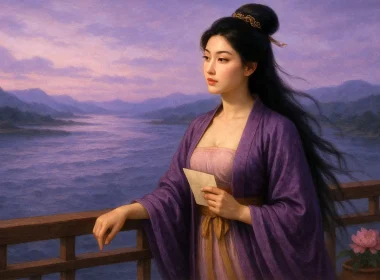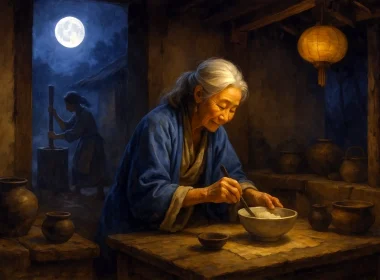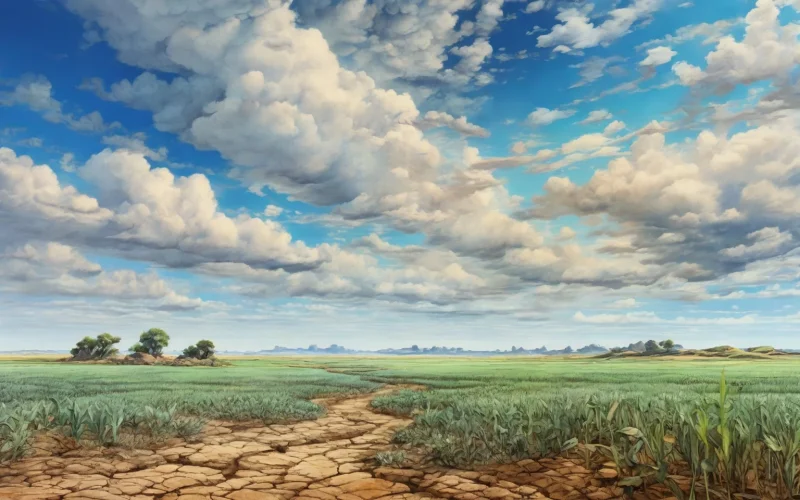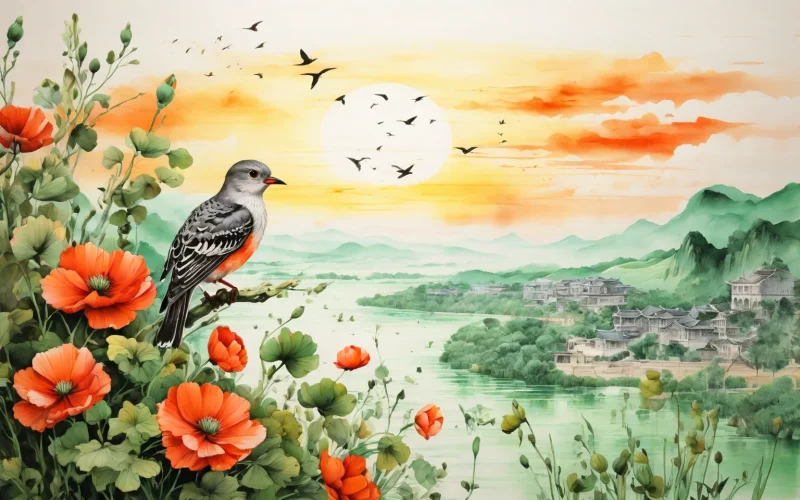You have a thousand shapes in flakes or piles in vain;
Hidden in mountains or on water you remain.
The drought is so severe that all seedlings would die.
Why won't you come down but leisurely tower high?
Original Poem
「云」
来鹄
千形万象竟还空,映水藏山片复重。
无限旱苗枯欲尽,悠悠闲处作奇峰。
Interpretation
Composed during the late Tang Dynasty amidst warlord conflicts and prolonged drought, this poem uses shifting cloud formations as metaphors for societal neglect. While ostensibly describing nature, Lai Hu embeds scathing social criticism and profound indignation toward unresponsive authorities.
First Couplet: "千形万象竟还空,映水藏山片复重。"
Qiān xíng wàn xiàng jìng hái kōng, yìng shuǐ cáng shān piàn fù chóng.
Myriad forms dissolve to naught,
Doubled in lakes, behind peaks caught.
The opening bypasses specific cloud shapes, using "myriad forms" to emphasize their elusive nature. "Dissolve to naught" conveys bitter disappointment from hoped-for rain that never comes. The clouds' playful hide-and-seek ("doubled in lakes, behind peaks") mirrors authorities' evasiveness, intensifying the poet's frustration.
Second Couplet: "无限旱苗枯欲尽,悠悠闲处作奇峰。"
Wú xiàn hàn miáo kū yù jìn, yōu yōu xián chù zuò qí fēng.
Endless crops wither bone-dry,
While you idly sculpt peaks sky-high.
This devastating contrast pits dying farmland against clouds' leisurely shape-shifting. The expected life-givers (clouds/leaders) instead indulge in aesthetic vanity ("sculpt peaks") amid widespread suffering. The couplet's plain language delivers corrosive satire—nature's indifference mirroring official apathy.
Holistic Appreciation
Superficially depicting summer clouds' transformations, the poem actually critiques ineffectual rulers through the "clouds-that-won't-rain" metaphor. A threefold emotional arc unfolds: hopeful anticipation → crushing disappointment → righteous fury. The initial "dissolve to naught" establishes the theme, while "withering crops versus sculpted peaks" escalates to climactic indignation. Compact yet potent, the work blends tight structure with profound allegory.
Artistic Merits
The poet masterfully abstracts cloud imagery through phrases like "myriad forms" and "behind peaks caught," creating ethereal yet emotionally charged visuals. The jarring juxtaposition of "withering crops" and "sculpted peaks" generates biting irony, channeling outrage toward its true targets. Crucially, these clouds transcend meteorology—they embody the era's ornamental yet useless elite, revealing Lai Hu's genius for wrapping social critique in natural observation.
Insights
This poem demonstrates literature's dual power: to capture nature's beauty while excoriating societal failures. Lai Hu's seemingly gentle cloud metaphors sharpen into blades, slashing through official complacency. Beyond lamenting chaos, the poet weaponizes irony to protest injustice, reminding future generations that power without compassion is as hollow as rainless clouds—a spectacle of form devoid of nourishing substance. The work's enduring relevance lies in its blueprint for artistic resistance: subtle yet uncompromising.
Poem translator
Xu Yuanchong (许渊冲)
About the poet
Lai Hu (来鹄), ? - 883 A.D., a poet of the Tang Dynasty, was a native of Nanchang, Jiangxi. His family was poor, good at writing poems, and he lived in seclusion in the mountains and lakes.












